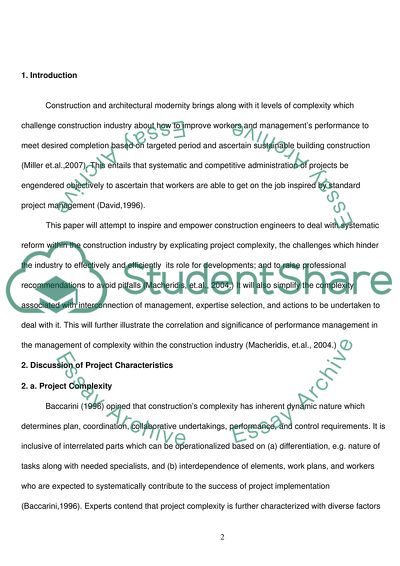Cite this document
(Construction Project Complexity: Characteristic that Project Managers Coursework Example | Topics and Well Written Essays - 2500 words, n.d.)
Construction Project Complexity: Characteristic that Project Managers Coursework Example | Topics and Well Written Essays - 2500 words. https://studentshare.org/engineering-and-construction/1758094-construction-project-complexity-critical-project-characteristic-that-project-managers-must-manage-to-deliver-successful-projects
Construction Project Complexity: Characteristic that Project Managers Coursework Example | Topics and Well Written Essays - 2500 words. https://studentshare.org/engineering-and-construction/1758094-construction-project-complexity-critical-project-characteristic-that-project-managers-must-manage-to-deliver-successful-projects
(Construction Project Complexity: Characteristic That Project Managers Coursework Example | Topics and Well Written Essays - 2500 Words)
Construction Project Complexity: Characteristic That Project Managers Coursework Example | Topics and Well Written Essays - 2500 Words. https://studentshare.org/engineering-and-construction/1758094-construction-project-complexity-critical-project-characteristic-that-project-managers-must-manage-to-deliver-successful-projects.
Construction Project Complexity: Characteristic That Project Managers Coursework Example | Topics and Well Written Essays - 2500 Words. https://studentshare.org/engineering-and-construction/1758094-construction-project-complexity-critical-project-characteristic-that-project-managers-must-manage-to-deliver-successful-projects.
“Construction Project Complexity: Characteristic That Project Managers Coursework Example | Topics and Well Written Essays - 2500 Words”. https://studentshare.org/engineering-and-construction/1758094-construction-project-complexity-critical-project-characteristic-that-project-managers-must-manage-to-deliver-successful-projects.


